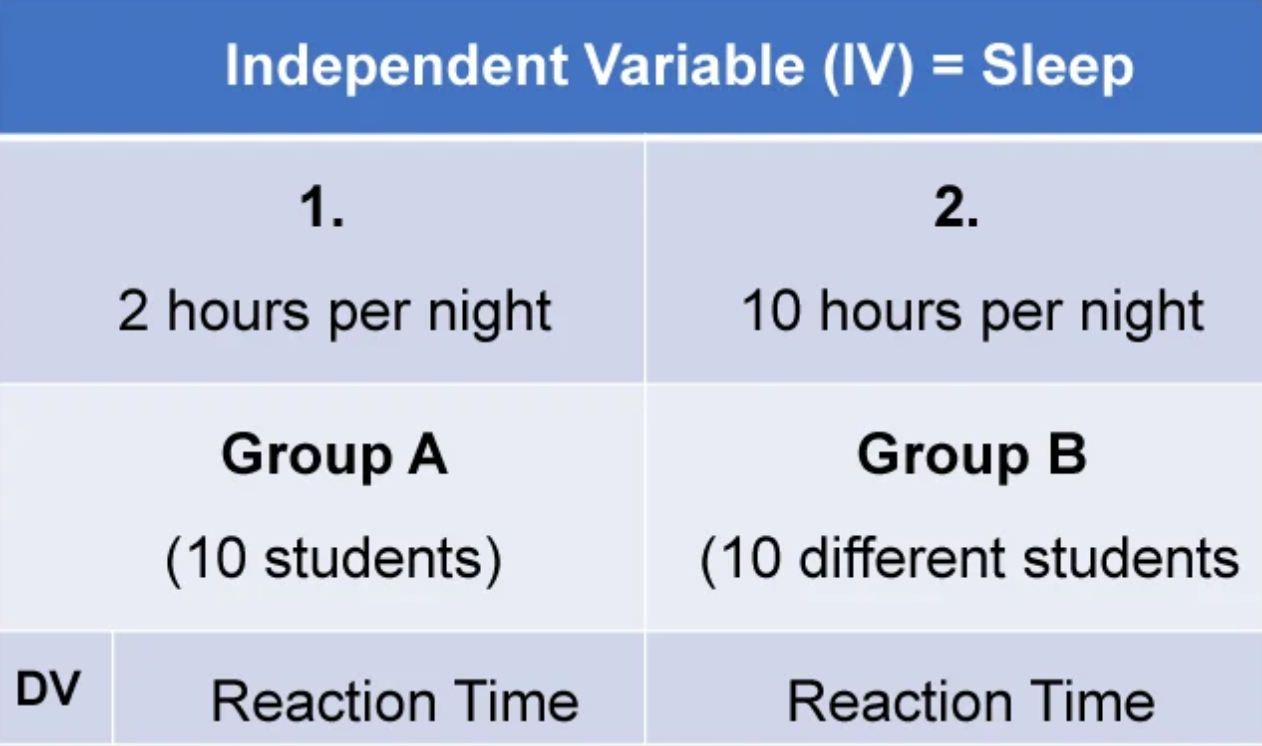0.06 Research Basics: Experimental Design
Designing an Experiment
Experimental/control groups
first, form hypothesis.
then, determine experimental/control group.
experimental group: the group that will receive treatment
control group does not get treatment, is only used as comparison
Operational definition
replication: reproduce results
to achieve replication, need to provide an operational definition (a precise description) of variables
ex. you could operationally define cell phone usage as “visiting social media and/or gaming sites more than twice per day.” This provides a clear basis for what you as the researcher were studying.
Independent and Dependent variables
independent var.
the variable that the researcher will manipulate, and the cause for a change to occur.
Also called explanatory variable in stats
dependent var.
what the researcher measures in order to see how much of an effect the independent variable had
also called response variable in stats
Selecting and Assigning Research Participants
Population vs. research sample
for the subjects, need to randomly assign the participants to either control or experimental group
this will reduce Confounding variables, which causes a change in the response to occur, aside from the independent variable.
Statistically significant results: also called p-value, says that there is a less than 0.05 chance that the results occurred due to chance, not independent variable
Peer-Reviewed Journals
Peer-reviewed journals are scientific journals whose audience is largely made up of other psychologists
Experimental Design: Types, Examples, Methods,
Designs
Independent Measures
independent measures design, also known as between-groups, are when different groups of individuals are used in each condition of the independent variable.
each condition of the experiment includes a different group of participants.

cons:
more people are needed (time consuming)
differences in participants may affect results (age, gender, social background, etc)
known as participant variables
pros:
avoids order effects as people participate in one condition only. if a person is involved in several conditions, they may become bored, tired, and fed up by the time they come to the second part of the experiment
Control: after participants are recruited, they will be randomly assigned to their groups to ensure groups are similar to reduce participant variables
Repeated measures design
an experimental design where the same participants participate in each independent variable condition
this means that each experiment condition includes same group of participants
repeated measures design is also known as within groups or within-subjects design
typically used for longitudinal studies
Pros:
does not require large subject pool
no variation in individual differences
because same participants are used in all conditions, there will be no effects from variations in individual differences between conditions (basically saying that becuase the people are the same, the effects can be more accurate since there are no other variables)
cons:
time requirement, since its done on the same participants, it can take a long time
carryover effects: adverse effect on participants, can be reduced by randomization and counterbalancing (Switching the order of treatments)